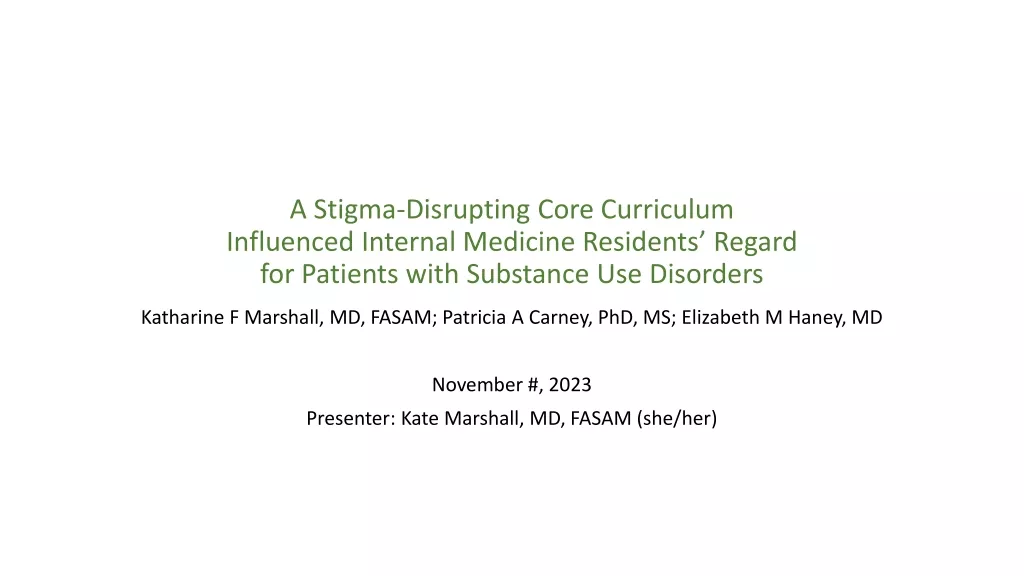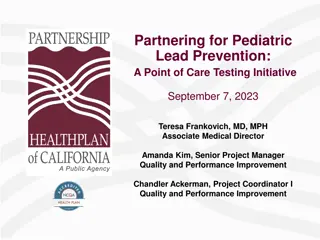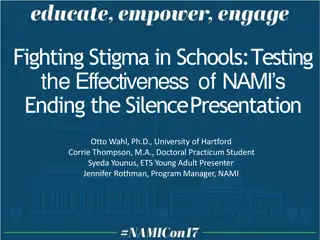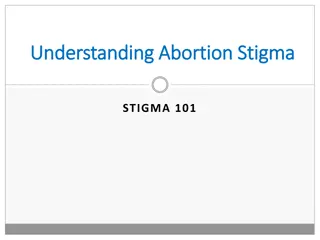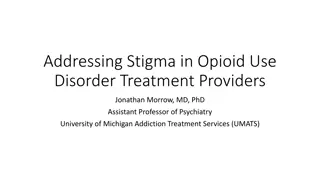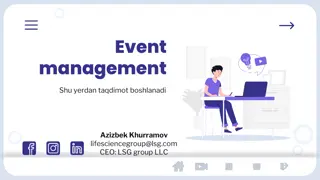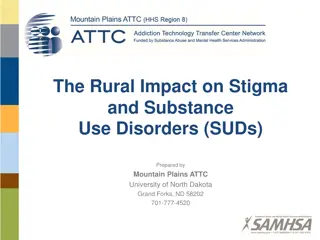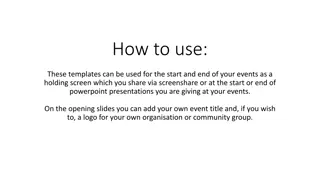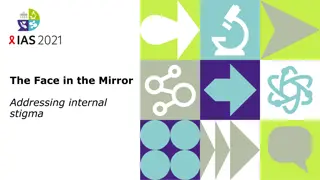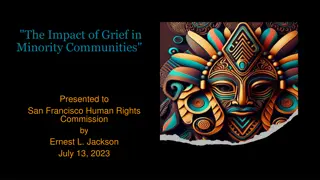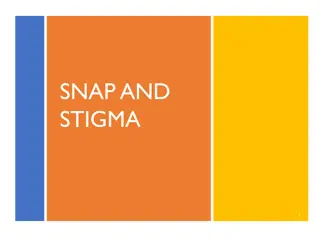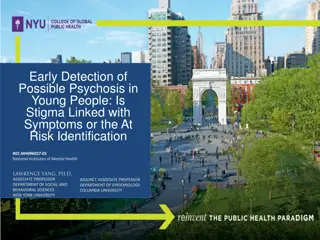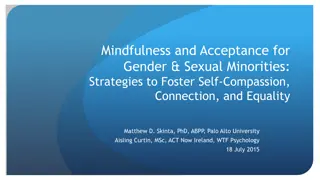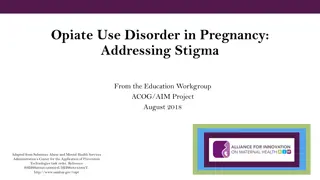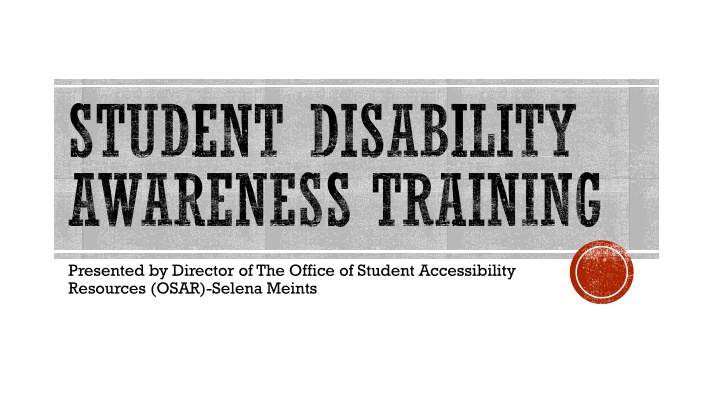
Student Disability Awareness Training and Rights on Campus
Learn about the Office of Student Accessibility Resources (OSAR) and their role in providing accommodations, resources, and advocating for disability rights on campus. Discover the laws, definitions, and examples of disabilities, helping to break stigmas and promote inclusivity.
Download Presentation

Please find below an Image/Link to download the presentation.
The content on the website is provided AS IS for your information and personal use only. It may not be sold, licensed, or shared on other websites without obtaining consent from the author. If you encounter any issues during the download, it is possible that the publisher has removed the file from their server.
You are allowed to download the files provided on this website for personal or commercial use, subject to the condition that they are used lawfully. All files are the property of their respective owners.
The content on the website is provided AS IS for your information and personal use only. It may not be sold, licensed, or shared on other websites without obtaining consent from the author.
E N D
Presentation Transcript
STUDENT DISABILITY AWARENESS TRAINING Presented by Director of The Office of Student Accessibility Resources (OSAR)-Selena Meints
WHAT DOES OSAR DO? Provide accommodations for all students who disclose to our office Provide resources for students who are in need of getting diagnosed Be an advocate for disability rights on campus Is an inclusive space for all New name alert! We used to be called The Office of Student Disability Services (SDS). We are now The Office of Student Accessibility Resources(OSAR)!
THE LAWS Rehabilitation Act of 1973 (Section 504) Americans with Disabilities Act (ADA) of 1990 as Amended Any public or private higher education institution that gets any form of federal funds, such as student loans or grants, must comply with these laws. Title III of the Americans with Disabilities Act ( ADA ) prohibits discrimination on the basis of disabilities in places of public accommodations, commercial facilities, and private entities that offer certain examination and courses related to educational and occupational certification. The Higher Education Opportunity Act (HEOA)- Provides financial assistance to students. Provides grants to colleges to develop support services for students.
WHAT DO YOU THINK OF WHEN YOU HEAR THE WORD DISABILITY? Take a moment to think
WHAT IS A DISABILITY? An individual with a disability is a person who has impairments that substantially limit major life activities such as seeing, hearing, speaking, walking, breathing, performing manual tasks, learning, caring for oneself, and working. Disabling conditions include epilepsy; paralysis (e.g., cerebral palsy, muscular dystrophy, multiple sclerosis); HIV infection; AIDS; a substantial hearing or visual impairment; intellectual disability; psychiatric disability; cancer; heart disease; diabetes; or a specific learning disability, plus many more.
EXAMPLES OF DISABILITY There are over 2.4 million postsecondary students with a disability attending college in this country. Examples include: Blind or low vision Deaf or hard of hearing Chronic health conditions such as Crohn's disease Mental health-(Depression, Anxiety, BPD, Bipolar, etc.) Learning disabilities-Dyslexia, Dyscalculia, Dysgraphia, Executive Functioning Developmental Disability: Autism, Cerebral Palsy, Muscular Dystrophy, Tourette Syndrome
DO YOU THINK THERE IS A STIGMA AROUND THE WORD DISABILITY? Think on this for a minute
STEPS TO BATTLE THE STIGMA OF DISABILITY Step 1: Educate yourself (You are doing this now!) Step 2: Be supportive of your peers Step 3: Be careful with your words Step 4: Look around at the world and find barriers Step 5: Be inclusive to all
WHAT IS AN ACCOMMODATION? A reasonable accommodation is a modification or adjustment to a course, program, service, job, activity, assessment, test, or facility that enables a qualified individual with a disability to have an equal opportunity to attain the same level of performance or to enjoy the same benefits and privileges that are available to an individual without a disability. A college or university is not required to make any modifications or provide any aid or services that would fundamentally alter the nature of a program. Additionally, a school is not required to make a modification or provide an aid or service if doing so constitutes an undue burden on the institution.
ISNT THIS UNFAIR TO EVERYONE ELSE? Students with disabilities should be held to the same evaluation and grading standards as those for all students. Accommodations do not give the student with a disability an unfair advantage. Rather, reasonable accommodations are intended to give students with disabilities an equal opportunity to achieve the same results that other students have the opportunity to achieve.
DOCUMENTATION Accommodations are not given automatically. Students have to self-disclose to our office. Everything is kept confidential! William Woods University s Request for Accommodation procedure relies on third party documentation from appropriate, licensed professionals within the last five years of the accommodation request date. Documentation may include an Individual Education Plan (IEP) or 504 Plan, but such documentation by itself is not sufficient for approval. Diagnostic testing from a professional will be needed for certain disability accommodations. The cost of obtaining third party documentation will be borne by the student.
WHAT IS A BLUE CARD? The Blue Card is another term for a Letter of Accommodations which is a document provided by OSAR that explains to faculty which reasonable accommodations is to be provided to a student. The letter contains specific accommodations recommended by OSAR based on the student's disability. It is important that the student and professor have a clear understanding of what is agreed upon regarding the use and implementation of these accommodations and practical arrangements. Any conversations about accommodations should occur in as confidential of a manner as possible, so we encourage students to utilize office hours when possible. Students are strongly encouraged to show their Blue Card to their professor in the first two weeks of the semester. However, it should be understood that under some circumstances (e.g. student was approved for accommodations later in the semester, student was recently diagnosed) the student may show their letter later in the semester.
THE DIFFERENCE BETWEEN K-12 VS. UNIVERSITY Students with disabilities face several barriers as they enter postsecondary educational institutions. They are leaving a high school environment where teachers, other professionals, and their parents have helped guide their educational program. A student s disclosure of a disability is always voluntary. However, students with disabilities may feel nervous to disclose sensitive medical information to an instructor. They may face architectural barriers if they have physical disabilities or use a walker or wheelchair. Some students encounter peers and adults that may have negative attitudes and expectations for their classroom performance, often because they have not had experience with students with disabilities. Another challenge is that once students enter college they are hesitant about disclosing their disability or self-advocating for themselves; thus, many students with disabilities may remain unknown to you because they are concerned about stigma, rejection or discrimination. For first year students, this may be a different process than what they experienced in high school with an Individualized Education Program (IEP) or Section 504 plan.
TYPICAL ACADEMIC ACCOMMODATIONS Use of interpreter Close captioning Note taker (Please let us know if you will volunteer as a Note-taker for a classmate!) Taped lectures Braille textbooks Text to speech software Enlarged copies of notes, required readings, handouts, and exam questions Preferential seating in the classroom Readers (person or pen) for tests Extended time on exams (1.5 or 2x) Quiet, distraction-free environment for taking exams Alternative testing methods (i.e., demonstrating mastery of course objectives using a research paper, oral presentation, etc.) Chunking of the exam-portion the test out into multiple sections
LETS BREAK DOWN SOME SPECIFIC DISABILITIES AND THEIR STIGMAS
AUTISM/ASD Annoying Burden Worldwide, roughly 1 in 160 people is thought to have autism. 1 in 54 children in the U.S. have autism. ASD is the umbrella term for autism. Females are more likely to go undiagnosed than males-girls are better at masking. Commonly diagnosed with ADHD along with depression/anxiety as well. People with autism are three times more likely to commit suicide. Autistic people may have sensory concerns, difficult to hold a conversation, do not make eye contact, or have a focused interest in a specific area. Autism does NOT look the same in every person!!
AUTISM CONT. What do you think of when you hear the phrase autistic? Annoying, disconnected from others, can t take a joke, they are a burden These are direct quotes from students who have experienced these harsh words. Being kind to everyone goes a long way. People with autism normally like to have deeper conversations than just small talk. They like to be honest and prefer not to be treated differently. They often cannot read social cues and like people to be honest with them. They normally do not prefer the term high/low functioning but do not mind the word spectrum. Many people with autism have created important inventions but they do not just want to be known as geniuses.
WHAT IS ADHD? There are 3 different types (ADD no longer is recognized) Chronic in-attention Procrastination Hyperactivity Impulsivity Constantly fidgeting Excessive talking Acting without thinking Trouble organizing tasks/activities in daily life Forgetful Messy room/desk Always late Combined with other Learning Disability
ADHD FAST FACTS An estimated 6.1 million American children aged 2-17 years old had ever received a diagnosis of ADHD. The U.S. lifetime prevalence of ADHD in adults aged 18 to 44 years of age is estimated to be 8.1%, with current prevalence estimated to be 4.4%. The median age of diagnosis for moderate ADHD is 6 years old. Diagnostic criteria for ADHD were initially developed for children, and therefore, the diagnosis of ADHD among adults is growing four times faster than ADHD diagnoses among children in America. Most research suggests that ADHD does not really go away, but more so adults report less symptoms. For instance, hyperactivity symptoms typically decrease with age. Only 11% of adults with ADHD receive treatment.
HOW TO GET DIAGNOSED If you feel that you have ADHD or resonate with the symptoms discussed please reach out to your primary provider who can refer you to get tested. Neurologists/psychiatrists can perform an ADHD assessment and provide a report to the OSAR office. Behavioral therapy and medication are the top two treatments. Having a consistent schedule, an updated calendar, making lists, setting reminders, and having accountability to stay organized will help students with ADHD.
LETS SWITCH GEARS NOW . It s not just academics we help with!
LETS TALK ABOUT MENTAL HEALTH 1 in 5 Americans suffers from a mental illness (NIMH). 41 percent of Americans dealt with an untreated mental illness. (Mental Health First Aid). More than 25 percent of college students have been diagnosed or treated by a professional for a mental illness. 34.2% of students with a mental health condition said their college did not know about their crisis. 64% of students are no more pursuing their college due to mental health issues. 73% of college students with mental health conditions have experienced, on campus, a mental health crisis. https://www.thezebra.com/resources/research/mental-health-statistics/
WHERE TO GO FOR HELP Our counseling center on campus has two ladies who would be happy to make an appointment with you: University Counselors: Direct phone number: 573-592-4222 Located in Aldridge Reach out for off-campus support as well
OTHER ACCOMMODATIONS We also help with: Medical Single rooms ESA s/Service Animals First-floor classrooms/housing Allergies/Diabetes/Seizures/Chronic health conditions Concussions Temporary injury's with long rest periods Other
WHAT DO YOU THINK OF NOW WHEN YOU HEAR THE WORD DISABILITY? Has your perception changed?
CONTACT INFO Director of Student Accessibility Resources (OSAR) Selena Meints Selena.Meints@Williamwoods.edu or ada@Williamwoods.edu 573-592-1194 (office phone) 573-592-1164 (fax) Academic Building Room 109 Office Hours: 8:00 AM-4:30 PM
THANK YOU!! Thank you for attending our LEAD Event today! Please reach out anytime with questions.


